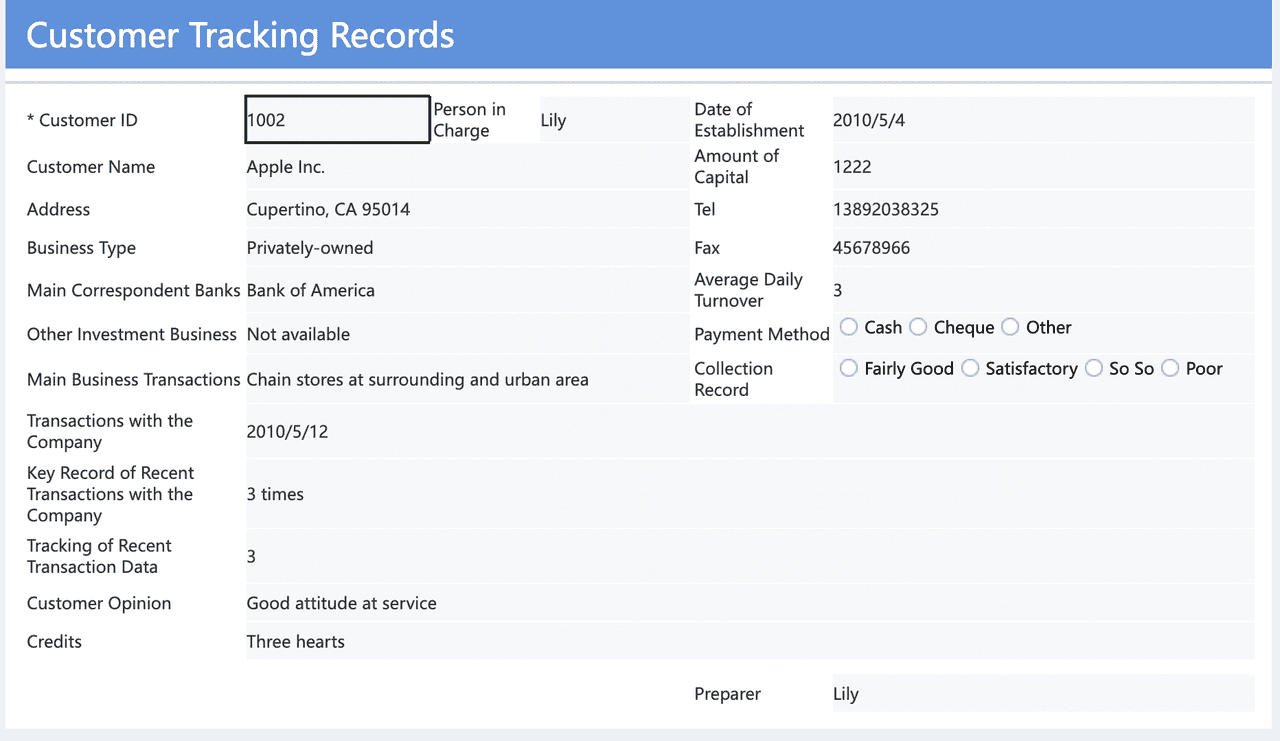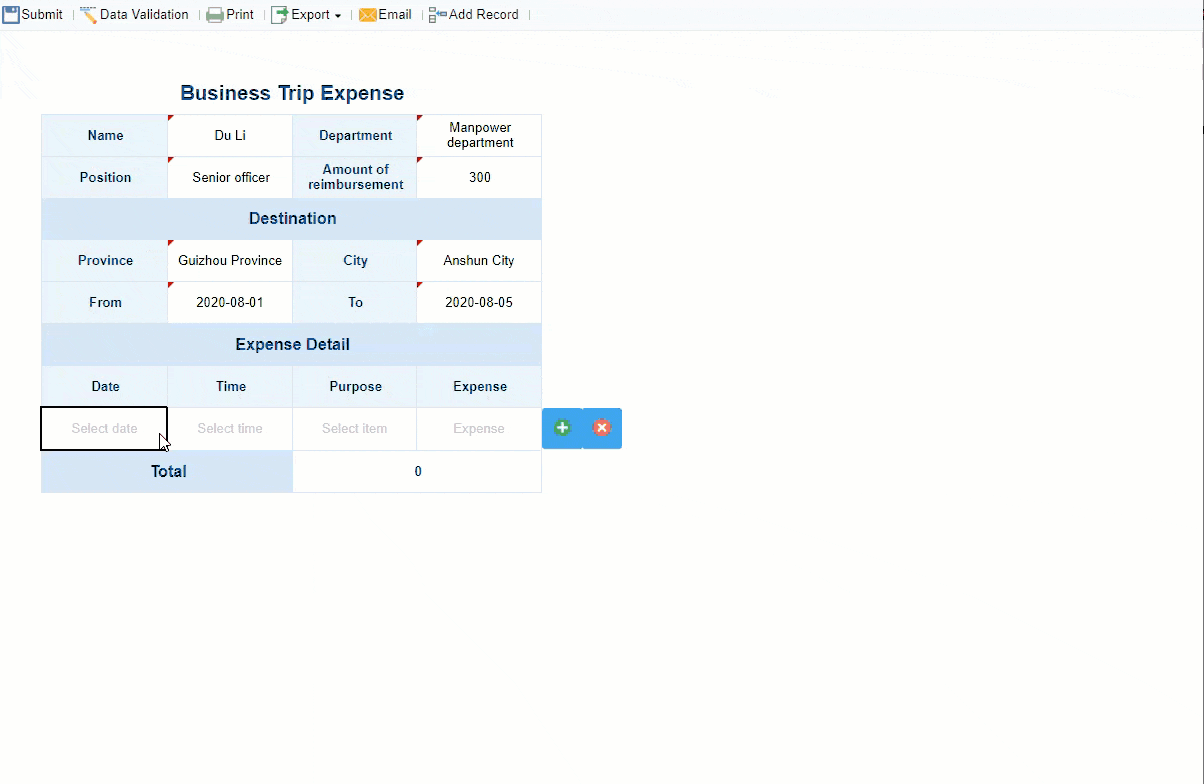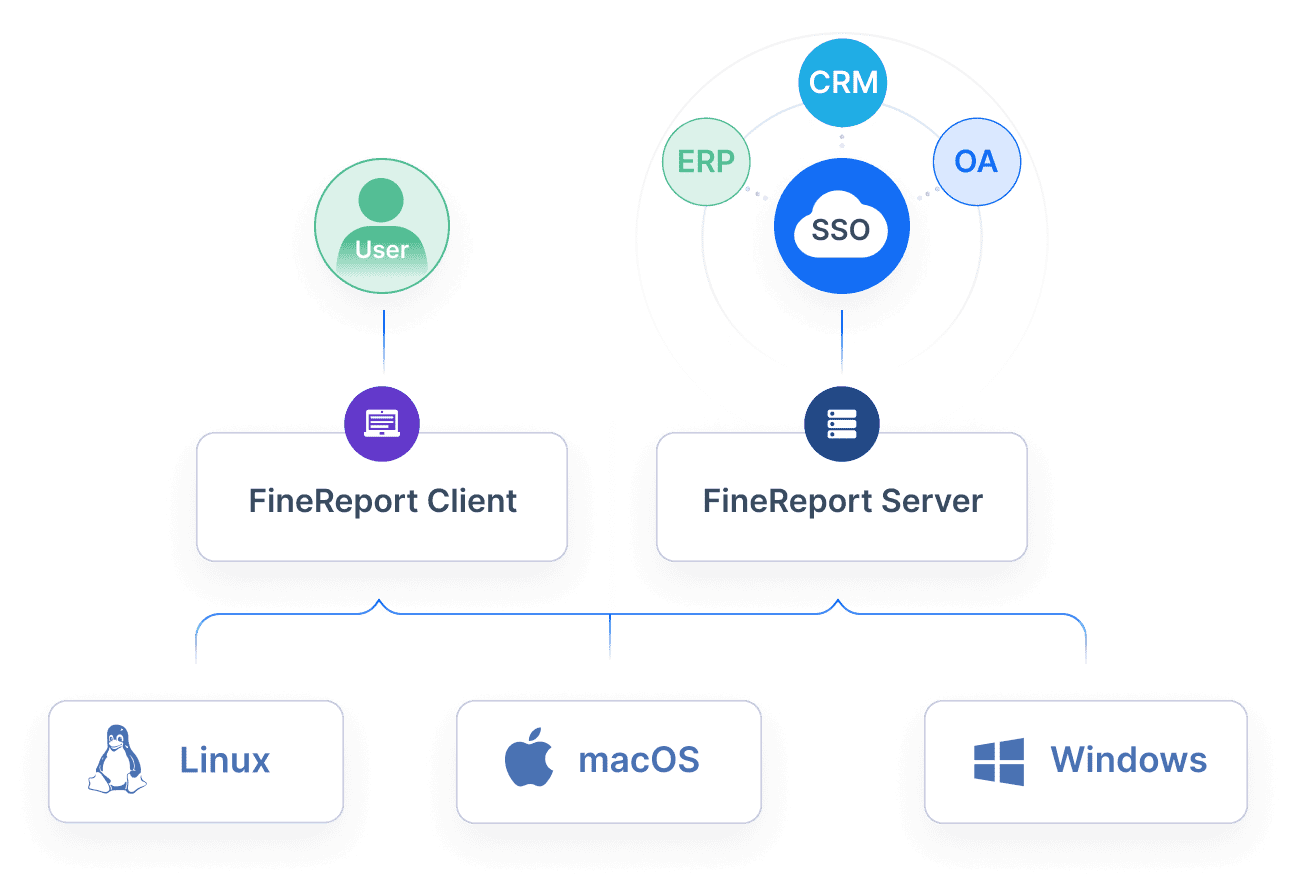Data entry plays a crucial role in digital transformation. It acts as the foundation for creating a data-driven system that fuels innovation and growth in Malaysia. By organizing raw data into structured formats, you enable businesses in Malaysia to gather insights and make informed decisions. The role of data entry extends beyond simple input tasks; it ensures accuracy and reliability, which are essential for effective operations. Understanding the importance of data entry helps you recognize how it impacts every aspect of your business in Malaysia, from customer experience to long-term strategy.
Key Takeaways
- Data entry is important for building systems that help growth. Correct data entry helps make smarter choices.
- Using machines for data entry saves time, cuts mistakes, and boosts work speed. This helps businesses in Malaysia aim for big goals.
- Sorting and organizing data well helps find patterns and make smart plans.
- Using tools like FineReport makes data entry easier, more correct, and helps manage live data better.
- Hiring others to do data entry can save money and time. This lets teams focus on their main work.
The Role of Data in Digital Transformation
Why Data is the Backbone of Digital Transformation
Data serves as the foundation for digital transformation. It enables businesses in Malaysia to make informed decisions and align their strategies effectively. In today’s digital landscape, data analytics plays a pivotal role in understanding consumer behavior and driving innovation. For example, a study analyzing China’s manufacturing sector highlights how advanced data mining techniques accelerate digital transformation. This underscores the critical role of data in evaluating and guiding digital initiatives across industries.
Organizations that leverage data can better understand market trends, customer preferences, and operational inefficiencies. This knowledge allows them to adapt quickly and maintain a competitive edge. Without data, businesses risk in Malaysia falling behind in a rapidly evolving digital world.
The Importance of Data Management in Driving Innovation
Effective data management is essential for fostering innovation. It ensures that data is accurate, accessible, and actionable. A survey of healthcare organizations revealed that 92% identified improving patient satisfaction as their top digital transformation goal. This highlights the role of data management in meeting evolving consumer needs.
Companies that prioritized capturing data during the shift to remote work were the first to identify new opportunities. This demonstrates how robust data management capabilities can drive innovation and uncover untapped potential.
By organizing and structuring data effectively, businesses in Malaysia can generate valuable data insights. These insights fuel creativity and enable the development of innovative solutions tailored to customer demands.
How Data Entry Powers Data-Driven Digital Transformation
Data entry acts as the starting point for data-driven digital transformation. It organizes raw information into structured formats, making it easier to analyze and interpret. Accurate data entry ensures that businesses in Malaysia can rely on their data for decision-making. A survey by Enterprise Strategy Group found that 56% of businesses reported improved performance due to embedded analytics, while 48% noted enhanced responsiveness to insights.
Data entry also supports automation by reducing manual effort. Tools like FineReport streamline data entry processes, enabling businesses in Malaysia to focus on strategic initiatives. By ensuring data accuracy, data entry enhances decision-making and improves overall efficiency.
How Data Entry Contributes to Digital Transformation in Malaysia
Organizing and Structuring Data for Business Insights
Organizing and storing data effectively is the first step toward unlocking its potential. When you structure data properly, it becomes easier to analyze and extract critical data insights. This process allows businesses to identify trends, predict outcomes, and make data-driven decisions. For example, tools like Talend, Informatica, and Microsoft SQL Server Integration Services (SSIS) help streamline data integration and ensure seamless data management.
| Tool Name | Description |
|---|---|
| Talend | An open-source data integration platform that enables efficient ETL processes. |
| Informatica | A leading enterprise solution for data integration, quality, and governance, suitable for large organizations. |
| Microsoft SQL Server Integration Services (SSIS) | A versatile ETL tool that automates data migration tasks for seamless integration. |
By using these tools, you can ensure data visibility and reliability, which are essential for analyzing data accurately. Businesses in Malaysia that prioritize organizing and structuring their data gain a competitive edge by transforming raw information into actionable insights.
Enabling Automation and Reducing Manual Effort
Automation in data entry reduces manual effort and enhances productivity. By automating repetitive tasks, businesses in Malaysia can focus on strategic goals rather than mundane processes in Malaysia. Statistics show that automation improves data quality, reduces errors, and increases staff productivity.
| Performance Metric | Impact on Automation |
|---|---|
| Data Quality | Enhanced data quality and reduced errors |
| Staff Productivity | Improved productivity by reducing manual tasks |
| Transaction Processing Time | Reduced processing time |
| Cost Savings | Significant cost reductions |
| Compliance | Effective and quick compliance management |
| Employee Morale | Elevated morale by focusing on high-priority projects |
Consider the case of PrimeLine Utility Services, which implemented a no-code field team platform. This change resulted in an annual ROI of 1228%, saving over $50,000 in fines and $3M to $5M in safety reporting processes. Similarly, a beverage store transitioned from manual data collection to a digital system, reducing holding costs by 18% and achieving up to 28% in cost savings through optimized logistics. These examples highlight how automation in data entry drives efficiency and reduces operational costs.
Enhancing Decision-Making with Accurate Data
Accurate data entry is the cornerstone of effective decision-making in Malaysia. When you ensure data accuracy, you create a foundation for reliable data analytics. This reliability allows businesses in Malaysia to extract meaningful insights and make informed decisions. For instance, robust data governance frameworks ensure data integrity and accuracy, while promoting a culture of accessibility where employees can easily access critical data insights.
| Key Aspect | Description |
|---|---|
| Data Governance | Establishing robust frameworks to ensure data integrity and accuracy. |
| Culture of Accessibility | Promoting an environment where critical data is easily accessible to all employees. |
| Alignment with Preferences | Ensuring that data analysis practices align with the operational preferences of the organization. |
| Data-Driven Decision-Making | Encouraging teams to utilize insights from data to enhance business operations and efficiency in Malaysia. |
When businesses in Malaysia rely on accurate data, they can shift from subjective opinions to objective, data-driven decisions. This transformation fosters better collaboration across departments and leads to improved outcomes. High-quality data also plays a vital role in strategic planning and customer satisfaction, ensuring that your organization stays ahead in a competitive market.
Improving Customer Experience in Malaysia Through Data Accuracy
Accurate data entry plays a pivotal role in improving customer experiences. When your business ensures data accuracy, it builds trust and reliability with customers. Errors in data can lead to miscommunication, delayed services, or incorrect billing, all of which negatively impact customer satisfaction. By prioritizing precision in data entry, you create a seamless experience for your customers.
How Accurate Data Builds Trust
Customers rely on your business in Malaysia to provide consistent and reliable services. Accurate data ensures that their preferences, purchase histories, and inquiries are handled correctly. For example, when a retail store uses precise customer data, it can personalize recommendations, offer tailored discounts, and send timely notifications. This attention to detail fosters loyalty and strengthens the relationship between your business in Malaysia and its customers.
Tip: Use tools like FineReport to validate and standardize data during entry. This reduces errors and ensures that customer information remains consistent across all platforms.
Enhancing Customer Interactions with Real-Time Data
Real-time data accuracy enhances customer interactions. When your team has access to up-to-date information, they can respond quickly to inquiries and resolve issues efficiently. Imagine a customer contacting support about an order. If the system provides accurate, real-time data, the representative can immediately address the concern, leaving the customer satisfied. Tools like FineDataLink enable real-time data synchronization, ensuring that your systems always reflect the latest updates.
Personalization Powered by Increased Accuracy
Personalization is key to enhancing customer experiences. Accurate data allows you to understand customer preferences and tailor your offerings accordingly. For instance, a travel agency can use precise data to recommend destinations based on past bookings or seasonal trends. This level of personalization makes customers feel valued and understood.
| Benefit | Impact on Customer Experience |
|---|---|
| Personalized Recommendations | Customers feel valued and understood. |
| Timely Notifications | Keeps customers informed and engaged. |
| Accurate Billing | Builds trust and reduces disputes. |
The Role of Automation in Data Accuracy
Automation tools streamline data entry processes, reducing human errors and ensuring consistency. By automating repetitive tasks, you free up your team to focus on customer-centric activities. For example, automated systems can verify customer addresses during checkout, preventing delivery issues. This not only saves time but also enhances the overall customer experience.
Accurate data entry is more than a technical process; it’s a commitment to your customers. When you prioritize data accuracy, you pave the way for better interactions, personalized services, and long-term loyalty.
Benefits of Effective Data Entry Practices
Automated Data Collection
Automated data collection transforms how you handle information. By replacing manual processes with automated systems, you can capture data more efficiently and accurately. This approach not only saves time but also reduces errors, ensuring that your data remains reliable for analysis. For example, in healthcare, automated data collection reduced errors by 20% and saved up to two hours of measurement time, significantly improving nurses’ productivity. Similarly, in manufacturing, companies like Intel decreased quality control time by 25%, saving $3 million by focusing on specific tests. These examples highlight how automation enhances productivity and drives cost savings.
| Case Study | Context | Outcome |
|---|---|---|
| Journal of Nursing Administration | Healthcare | Reduced errors by 20% and saved up to 2 hours, increasing productivity. |
| Aliaxis | Manufacturing and Distribution | Improved inventory management and supplier evaluation. |
| Intel | Manufacturing | Decreased quality control time by 25%, saving $3 million. |
Automating data collection also opens up new opportunities for analyzing data. With real-time data at your fingertips, you can identify trends, predict outcomes, and make data-driven decisions faster. This capability ensures that your business in Malaysia stays competitive in a rapidly evolving digital landscape.

Reducing Costs and Errors with Streamlined Processes
Streamlined processes reduce costs and minimize errors, making your operations more efficient. Automation plays a key role in this transformation. By automating repetitive tasks, you eliminate manual errors and improve overall productivity. For instance, centralized data systems reduce duplicate work and improve data management. Integrated workflows help identify redundancies, allowing you to optimize business processes in Malaysia.
- Automation reduces manual tasks, leading to fewer errors and improved efficiency.
- Streamlined operations save time and enhance overall productivity.
- Automating repetitive tasks cuts labor costs and minimizes errors.
- Centralized data systems improve data management and reduce duplicate work.
- Integrated processes eliminate redundancies in workflows.
When you streamline your processes, you also achieve significant cost savings. For example, businesses that automate data entry and management often report lower operational costs and faster turnaround times. These improvements not only enhance efficiency but also free up resources for strategic initiatives.
Achieving Scalability and Adaptability in Digital Transformation
Scalability and adaptability are essential for thriving in digital transformation. Effective data management practices enable your business in Malaysia to grow without compromising efficiency. By automating data entry and integrating data systems, you can handle larger volumes of information while maintaining accuracy. This scalability ensures that your operations can expand seamlessly as your business grows in Malaysia.
Adaptability is equally important. With robust data management systems, you can quickly respond to changing market conditions and customer demands. For instance, automated data analytics tools allow you to analyze data in real time, uncovering new opportunities and enabling faster decision-making. This adaptability ensures that your business remains agile and competitive.
Investing in scalable and adaptable data management practices also enhances your ability to innovate. By leveraging data insights, you can identify emerging trends and develop solutions that meet evolving customer needs. This proactive approach positions your business as a leader in digital transformation.
Leveraging Tools Like FineReport for Data Entry Efficiency in Malaysia
Efficient data entry is essential for successful digital transformation. Tools like FineReport simplify this process, enabling you to save time and improve accuracy. FineReport offers an Excel-like interface that allows you to create reports and manage data with ease. Its drag-and-drop functionality eliminates the need for complex coding, making it accessible even for users with minimal technical expertise.
FineReport enhances data entry efficiency by streamlining workflows. IT specialists and report developers can handle complex reporting tasks effectively. Business units can also access and update reports without relying heavily on technical teams. This accessibility fosters collaboration and ensures that your organization maintains a seamless flow of information.
The tool’s design prioritizes user-friendly features. For example, FineReport supports the creation of various reports, from simple summaries to detailed dashboards. These reports help you build a robust data decision-making system. By integrating data from multiple sources, FineReport ensures that your data remains consistent and reliable. This consistency is crucial for effective data management and decision-making.
Automation is another key feature of FineReport. It reduces manual effort by automating repetitive tasks, such as data validation and report generation. This automation not only saves time but also minimizes errors, ensuring that your data remains accurate. For instance, FineReport allows you to schedule tasks like daily or monthly report updates. These automated processes free up your team to focus on strategic initiatives.
FineReport also supports real-time data entry and synchronization. This capability ensures that your systems always reflect the latest information. Real-time updates are particularly valuable in industries like finance and retail, where timely decisions can significantly impact outcomes. By leveraging FineReport, you can enhance your organization’s adaptability and responsiveness.

Incorporating FineReport into your data management strategy offers long-term benefits. It improves operational efficiency, reduces costs, and supports scalability. As your business in Malaysia grows, FineReport’s robust features ensure that your data management processes can adapt to increasing demands. This adaptability positions your organization for sustained success in a competitive digital landscape.
Tip: Use FineReport’s drag-and-drop interface to customize reports that align with your business goals in Malaysia. This feature simplifies the process of organizing and analyzing data, making it easier to derive actionable insights.
FineReport is more than just a reporting tool. It is a comprehensive solution that empowers you to optimize data entry and management processes. By adopting tools like FineReport, you can transform how your organization handles data, paving the way for innovation and growth.
Challenges in Data Entry and Solutions for Digital Transformation
Overcoming Manual Data Entry Challenges with Automation
Manual data entry often leads to inefficiencies, errors, and high labor costs in Malaysia. Automation offers a solution by streamlining processes and reducing human intervention. Automated systems improve accuracy and allow you to focus on strategic tasks rather than repetitive ones.
- Automation minimizes costly errors, especially in sensitive areas like finance.
- It reduces labor costs by eliminating routine manual tasks.
- Automated systems enhance productivity, enabling professionals to focus on high-value activities.
For example, automated data entry systems can process large volumes of information quickly and accurately. This efficiency ensures that your business in Malaysia operates smoothly and avoids the pitfalls of manual errors. Accurate data entry also supports better decision-making, as reliable data forms the foundation for actionable insights.
Tip: Implementing tools like FineReport can help automate data entry tasks, saving time and improving accuracy.
Ensuring Data Security and Compliance in Digital Transformation
Data security is a critical concern in digital transformation. You must ensure that your systems protect sensitive information while complying with regulations. Best practices include conducting privacy impact assessments and adopting privacy-enhancing technologies like differential privacy.
- Regular internal audits help identify gaps in data handling practices.
- Transparency in data collection builds trust with customers.
- Implementing an Information Security Management System (ISMS) ensures compliance and mitigates risks.
By prioritizing data security, you not only protect your organization but also build customer confidence. Secure systems enable you to handle data responsibly, which is essential for long-term success.
Leveraging FineDataLink for Real-Time Data Integration
Real-time data integration is vital for staying competitive in a fast-paced digital environment. FineDataLink simplifies this process by synchronizing data across multiple sources with minimal latency. This capability ensures that your systems always reflect the latest information.

| Challenge | Objective | Key Partners | Leading Customers | Value Proposition | Critical Resources |
|---|---|---|---|---|---|
| Data Silos | Unified Access | Partner A | Customer A | Streamlined Operations | Resource A |
| Complex Formats | Simplified ETL | Partner B | Customer B | Enhanced Efficiency | Resource B |
| Real-Time Needs | Instant Updates | Partner C | Customer C | Improved Decision-Making | Resource C |
FineDataLink’s real-time synchronization allows you to make informed decisions quickly. Whether you’re managing supply chains or analyzing customer behavior, this tool ensures that your data remains accurate and actionable.
Note: Real-time integration not only improves operational efficiency but also enhances customer experiences by providing up-to-date information.
Outsourcing Data Entry for Enhanced Efficiency
Outsourcing data entry can transform how your business operates in Malaysia. By delegating this task to specialized service providers, you gain access to expert handling, advanced tools, and streamlined processes. This approach not only enhances efficiency but also allows you to focus on strategic goals that drive growth.
One of the biggest advantages of outsourcing is cost savings. Managing data entry in-house often requires significant investments in hiring, training, and infrastructure. Outsourcing eliminates these expenses, enabling you to allocate resources more effectively. Additionally, outsourcing partners often use advanced technologies to minimize errors, ensuring higher data accuracy.
| Aspect | Outsourcing | In-House |
|---|---|---|
| Cost Savings | Reduces costs related to hiring and infrastructure | Higher costs due to hiring and training staff |
| Efficiency Improvements | Access to specialized services enhances efficiency | Limited by in-house capabilities |
| Error Reduction | Lower error rates due to expert handling | Higher error rates leading to costly reworks |
| Focus on Core Activities | Frees up resources for strategic initiatives | Diverts focus from core business functions |
| Infrastructure Investment | No need for additional infrastructure | Requires significant investment in resources |
Outsourcing also improves your team’s productivity. By offloading repetitive tasks, your employees can concentrate on high-priority projects. For example, instead of spending hours on manual data entry, your staff can focus on analyzing data insights or enhancing customer experiences. This shift not only boosts morale but also drives innovation within your organization.
Another benefit is scalability. Outsourcing partners can handle fluctuating workloads with ease. Whether your business needs to process large volumes of data during peak seasons or scale down during quieter periods, outsourcing provides the flexibility to adapt without disrupting operations.
By outsourcing data entry, you position your business in Malaysia for long-term success. You reduce operational costs, improve data accuracy, and free up resources for strategic initiatives. This strategy ensures that your organization remains agile and competitive in today’s fast-paced digital landscape.
Tip: Partner with reliable outsourcing providers who prioritize data security and compliance. This ensures your sensitive information remains protected while you enjoy the benefits of enhanced efficiency.
Optimizing Data Entry for Digital Transformation Success
Best Practices for Accurate and Efficient Data Entry
Optimizing data entry begins with adopting proven practices that ensure accuracy and efficiency. Clear protocols for data collection provide consistency and reliability. Training data collectors equips them with the skills to minimize errors. Validated tools enhance precision, while pilot testing refines methods before full implementation. Regular monitoring and validation processes identify and correct errors promptly, ensuring high-quality data.
Organizations across industries have demonstrated the impact of these practices. ABC Hospital reduced errors by 75% using automated data entry software with OCR technology, improving patient care outcomes. XYZ Retail achieved 98% inventory accuracy by integrating barcode scanning systems with POS platforms, enhancing customer satisfaction. DEF Finance utilized robotic process automation for financial data entry, reducing errors by 90% and ensuring compliance. These examples highlight how adopting best practices transforms data entry into a reliable foundation for digital transformation.
Tip: Regularly clean and back up your data to maintain its integrity and prevent loss.
Aligning Data Entry Processes with Business Goals
Aligning data entry processes with broader business goals ensures that your digital transformation initiatives remain strategic. Integrating and analyzing data from multiple sources provides insights into customer behavior and operational performance. These insights support informed decision-making and help you adapt to market changes.
Embracing digital technologies enhances resilience and adaptability. For example, aligning data entry with long-term objectives allows you to streamline operations and improve efficiency. This alignment ensures that your data-driven strategies contribute to achieving competitive advantages in a digital landscape.
Callout: Use data entry processes to uncover trends and opportunities that align with your business goals in Malaysia.
Investing in Tools Like FineReport for Data Management
Investing in tools like FineReport revolutionizes how you manage data. FineReport offers features such as customizable dashboards, drag-and-drop functionality, and real-time data synchronization. These capabilities simplify data entry and reporting, making it accessible to users across departments.
| Feature Category | FineReport | TiMi |
|---|---|---|
| Customizable Dashboard | Yes | No |
| Drag & Drop | Yes | No |
| Scheduled / Automated Reports | Yes | No |
| Predictive Analytics | Yes | No |
| Collaboration | Yes | No |
FineReport’s ability to integrate data from multiple sources ensures consistency and reliability. Its automation features reduce manual effort, saving time and minimizing errors. For example, scheduled reports eliminate repetitive tasks, allowing your team to focus on strategic initiatives. By investing in FineReport, you enhance scalability, adaptability, and operational efficiency, positioning your organization for sustained success in digital transformation.
Training Teams to Adapt to Digital Transformation Tools
Adapting to digital transformation tools requires your team to develop new skills and embrace change. Training plays a crucial role in ensuring that employees feel confident and capable when using these tools. A well-structured training program not only boosts productivity but also fosters a culture of continuous learning.
Tailored training programs can significantly enhance your team’s ability to adapt. These programs focus on the specific needs of your organization, ensuring that employees gain relevant skills. Cloud-based learning management systems make this process even more effective. They provide real-time feedback and performance metrics, helping you track progress and identify areas for improvement. Companies that prioritize training strategies often find it easier to adapt to changing market demands.
Tip: Encourage active participation from leaders during training sessions. Their involvement can inspire your team and increase adoption rates.
Interactive, on-demand training tools also make a difference. For example, Sophos used Whatfix to train employees during a Salesforce implementation. This approach reduced sales operations support tickets by 15% and saved 1,070 man-hours. Such results highlight the importance of investing in modern training solutions.
Open communication is another key factor. Addressing concerns and resistance early ensures smoother transitions. When employees understand the benefits of new tools, they are more likely to embrace them. Regular feedback sessions can help you identify challenges and refine your training approach.
By equipping your team with the right skills and fostering a supportive environment, you set the stage for successful digital transformation. Training is not just an investment in tools; it’s an investment in your people and their ability to drive innovation.
Data entry forms the backbone of successful digital transformation. It ensures your data remains accurate, structured, and actionable. Tools like FineReport and FineDataLink simplify this process, enabling you to achieve your digital transformation goals efficiently. To unlock new opportunities for growth, focus on automating repetitive tasks, training your team, and aligning data entry practices with your business objectives in Malaysia. By prioritizing these steps, you can transform your operations and stay ahead in a competitive landscape.
Click the banner below to try FineReport for free and empower your enterprise to transform data into productivity!
Continue Reading About Data Entry
How to Earn Money Fast with Simple Data Entry?
Top Platforms for Data Entry Work From Home in Malaysia
FAQ

The Author
Lewis
Senior Data Analyst at FanRuan
Related Articles

From Vanity to Velocity: Why Most Marketing Dashboards Underperform
Effective marketing dashboards follow the funnel. Avoid mixing metrics or showing KPIs without targets. FineBI helps teams build structured dashboards that turn fragmented data into actionable insights.
RuanRuan
Nov 06, 2025

What is Financial Analytics and Why Does It Matter
Financial analytics transforms financial data into actionable insights, helping businesses improve decision-making, manage risks, and drive growth.
Lewis
Oct 10, 2025

Top Enterprise Data Platform Products Compared
Compare top enterprise data platform products on features, integration, scalability, and security to choose the best solution for your business needs.
Lewis
Oct 03, 2025



